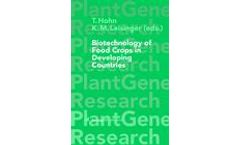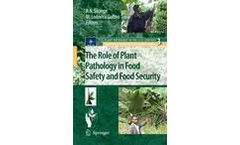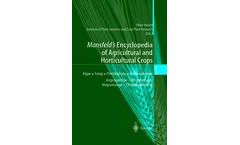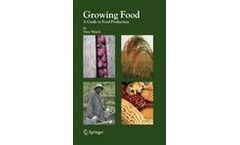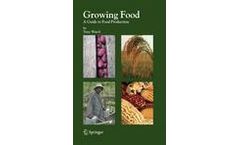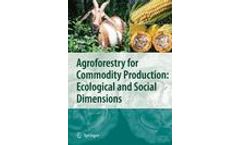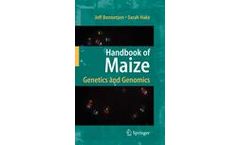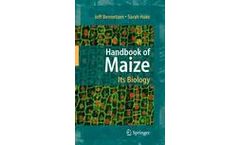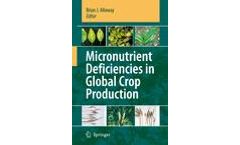Refine by
food-crop books
18 books found
Tropical crops such as cowpea, yam, plantain, and cassava are heavily underresearched but, in addition to rice, maize, wheat, and potato, are important as primary or secondary food staples in the developing countries. The modern tools of molecular and cellular technology offer the opportunity not only to make substantial gains in knowledge of these ...
It has been estimated that one quarter of the world's food crops, including many basic foods, are affected by mycotoxin-producing fungi. ...
This book describes the outputs of the IBSNAT network, including topics on data standards and the minimum data set, crop simulation models of major food crops, and application programs to assess risk resulting from implementation of different management options and ...
This book views the vulnerability of our crops in general to devastating diseases as well as specifically the disease problems of two important staples, rice and cassava. ...
This book, written by leading grain scientists from Europe and Africa, examines six such grains that have been important food crops in various parts of the world and have the potential for much greater and more widespread use. The chemistry, nutritional value, food processing technologies and potential applications of three true cereals: sorghum, ...
More than 6040 species are covered, including food crops, forage, oil, fibre, spice, medicinal, industrial and so-called auxiliary plants (shade trees, green manure or cover plants). ...
The world continues to depend heavily upon a relatively small range of crops for food, fuel, fibre and industrial use, while many potentially good, economically acceptable alternatives exist. This book, which is the second in a series looking at underutilized crops, provides thorough details of those underutilized cereals and pseudocereals ...
This specialist handbook is intended as a quick and easy reference guide to be used by individuals and organisations that are involved with the production of food, from both agriculture and horticulture. It is designed to be used as a reference book that answers basic questions about how food is produced from plants, and aims to demystify the subject of growing food as far as possible. The focus ...
This specialist handbook is intended as a quick and easy reference guide to be used by individuals and organisations that are involved with the production of food, from both agriculture and horticulture. It is designed to be used as a reference book that answers basic questions about how food is produced from plants, and aims to demystify the subject of growing food as far as possible. The focus ...
Agrochemical products and adjuvants are of vital importance in agriculture, to protect food and fibre crops from weeds, insect pests and diseases, in order to feed and clothe the growing world population. ...
Plants produce a huge array of natural products (secondary metabolites). These compounds have important ecological functions, providing protection against attack by herbivores and microbes and serving as attractants for pollinators and seed-dispersing agents. They may also contribute to competition and invasiveness by suppressing the growth of neighboring plant species (a phenomenon known as ...
Farmers, Gene Banks and Crop Breeding: Economic Analyses of Diversity in Wheat, Maize, and Rice responds to concerns about the loss of valuable genetic resources and crop vulnerability arising from widespread cultivation of genetically uniform varieties. It assembles a series of applied studies focusing on the fundamental economic issues related to genetic diversity in crop species, with ...
Agroforestry systems have been touted as sustainable production systems that alleviate many of the environmental problems associated with modern production systems. Are they indeed ecologically and economically sustainable? Using case studies from around the globe, this book highlights the potential of agroforestry systems to produce a broad range of commodities. In addition to addressing the ...
Maize is one of the world’s highest value crops, with a multibillion dollar annual contribution to agriculture. The great adaptability and high yields available for maize as a food, feed and forage crop have led to its current production on over 140 million hectares worldwide, with acreage continuing to grow at the expense of other ...
Maize is one of the world’s highest value crops, with a multibillion dollar annual contribution to agriculture. The great adaptability and high yields available for maize as a food, feed and forage crop have led to its current production on over 140 million hectares worldwide, with acreage continuing to grow at the expense of other ...
A deficiency of one or more of the eight plant micronutrients (boron, chlorine, copper, iron, manganese, molybdenum, nickel and zinc) will adversely affect both the yield and quality of crops. Micronutrient deficiencies in crops occur in many parts of the world, at various scales (from one to millions of hectares), but differences in soil conditions, climate, crop genotypes and management, result ...


